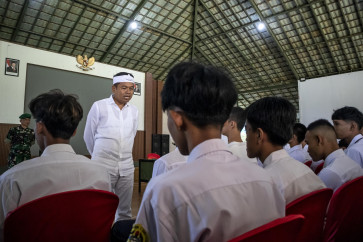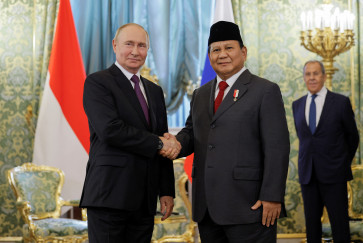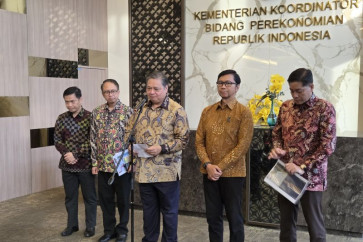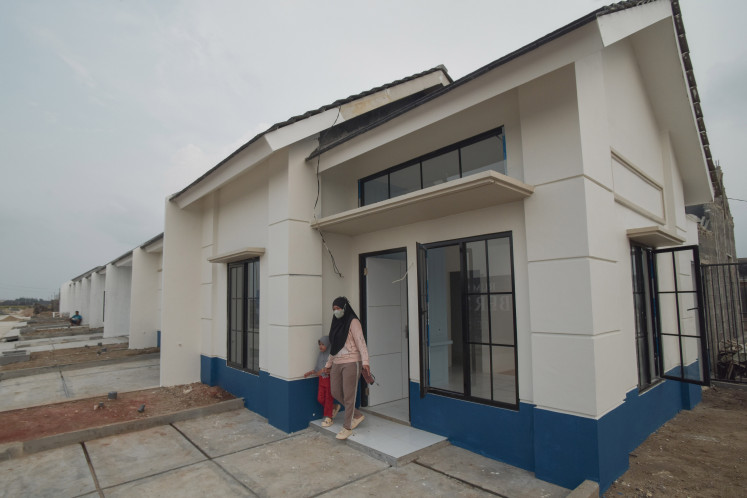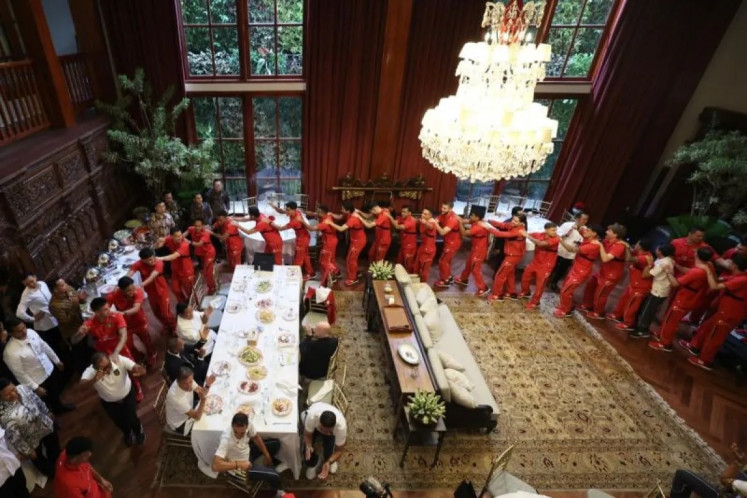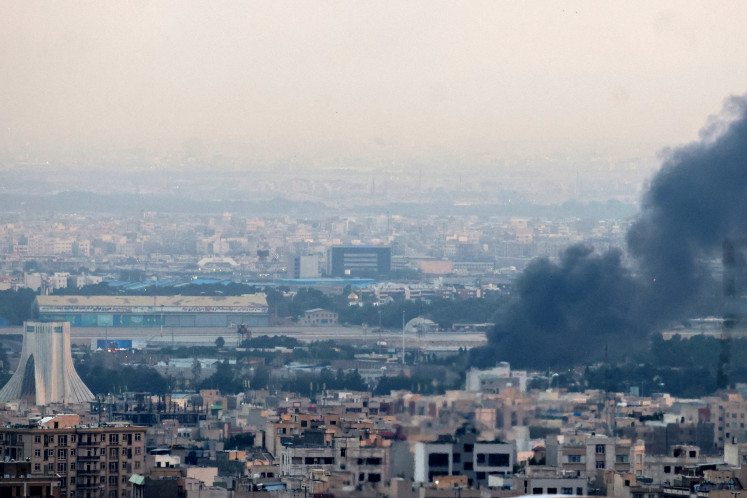Popular Reads
Top Results
Can't find what you're looking for?
View all search resultsPopular Reads
Top Results
Can't find what you're looking for?
View all search resultsDiscovering and promoting young artists at Asmaraloka Art Exhibition Chapter 3: Memories
Change text size
Gift Premium Articles
to Anyone
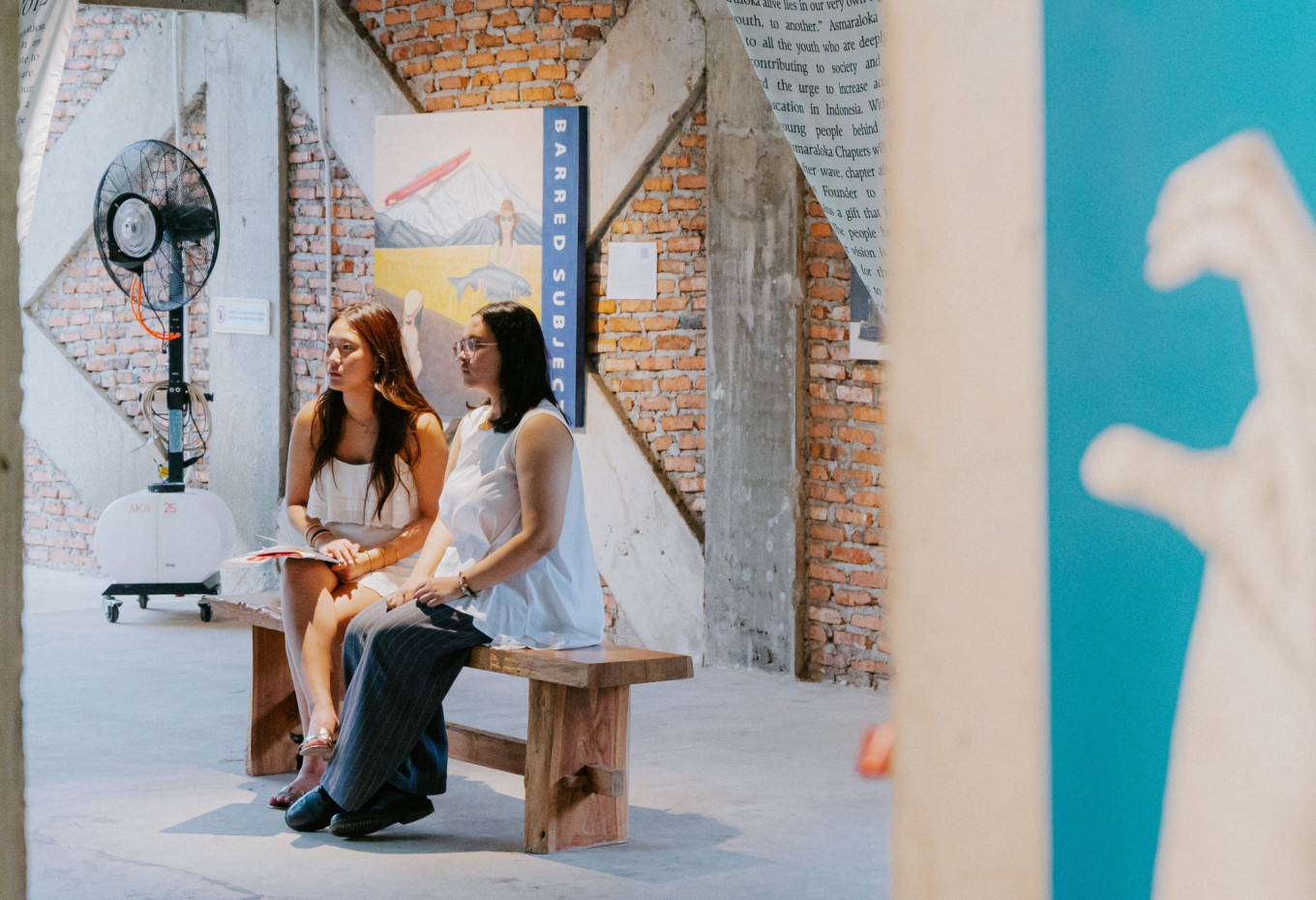 Sophie Pangestu, art director, and Zurisha Arabelle Joky, project director, on opening day
Sophie Pangestu, art director, and Zurisha Arabelle Joky, project director, on opening day
I
n a brutalist building of Semesta Gallery in South Jakarta, Asmaraloka Art Exhibition Chapter 3 displays a three-floor testament to “Memories”, and, more urgently, to the emergence of a new generation of Indonesian creatives.
Opened from Jun. 5 to 8, they were able to attract around 800 visitors this year, compared to a total of 400 for its previous chapters.
Here, under soaring ceilings and through sunlit courtyards, 35 young painters and sculptors stake their claim, each voice mapping personal histories onto canvas, installation, and sound.
On the exhibition’s second floor, an installation by Kenya Biru, Arka, and Zalfa Zahira entitled Forgotten Love: Reliving Memories demonstrates the curators’ interest for audience participation over passive observation: here, a scaffold of letters sits beneath a fabric tent, where visitors are invited to inscribe a memory, a wish, or a confession, and affix it to the artwork.
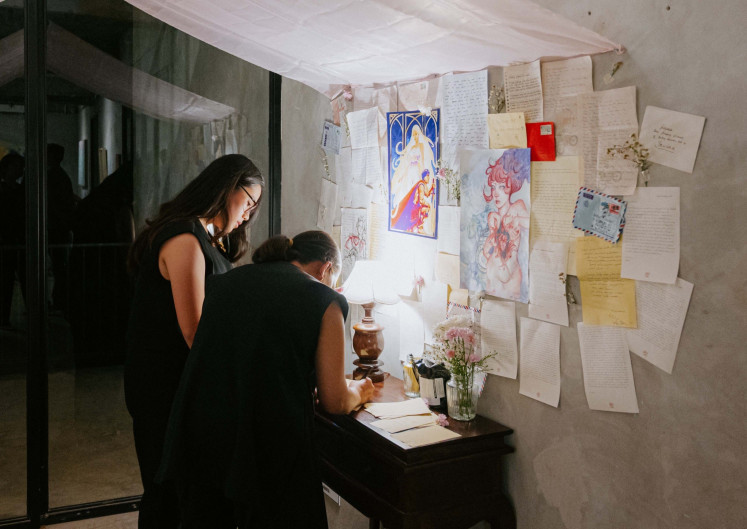
At the heart of Asmaraloka Chapter 3 stands its youthful curatorial team. Sophie Pangestu, art director and Jakarta Intercultural School senior, has shown continuity from the exhibition’s inaugural chapters; this year she collaborates with project director Zurisha Arabelle Joky of Mentari Intercultural School.
“The theme this year is Memories, and I think that it is tied to who you are as a person. Last year was Dreams and before that was Identity, so all the themes link to each other in how they shape you,” Sophie explains.
While the previous chapter was located in the center of the business district, the change in scenery for the third chapter allows the organization to be able to widen their audience base to people who live closer to the outskirts of the capital city.
“I feel like Semesta Gallery kind of feels like a home, the outdoor space. There's a lot of natural air and natural sunlight. And if you look around the gallery, it's also purely trees and just nature. So I think I wanted to embody that home feeling and warmth and resonate with a lot of the art. And with the brick, it really ties it together. It feels like you're walking into a home with a bunch of paintings instead of a gallery,” she said.
At the heart of Asmaraloka’s mission is the drive to unearth fresh talent and invite each young artist to wrestle with “Memories” on their own terms. Under Sophie Pangestu’s vigilant eye, now in her third consecutive year as art director, this deliberate effort amplifies voices too often muted in Jakarta’s mainstream art circles.
First-time collaborator Okkan Arugama Yuranoa, for instance, channels a moment of joy and pride when he first discovered a creative sanctuary. Elsewhere, young painter Yusuf Nofantoro confronts the weight of familial expectation: each brushstroke evokes the tension of a life scripted by a legacy in sewing and threading, before breaking free into an assertion of artistic autonomy.
Mochamad Rizky Aditya’s Padaringan unfolds as a three-edition series: each clay rice jar, cradled in its wooden crate, becomes a vessel of cultural memory, traced with motifs drawn from Javanese, Chinese, and Sundanese traditions.
In one edition, a crimson jar bears a prancing tiger amid flames; in another, a robin’s-egg blue vessel channels the sinuous dance of koi through lotus vines; and in the third, a deep teal container coils a dragon beneath swirling clouds.
Their lacquered forms rest in packing crates, as though poised for departure or arrival, inviting viewers to contemplate the journeys of tradition and home.

“The correlation of “Memories” by Asmaraloka with Padaringan becomes a memory of the Indonesian nation,” Aditya reflects. “Padaringan embodies prosperity and welfare because it contains high philosophical values. I invite art enthusiasts to remember that our ancestors stored rice in these clay jars—each one a testament to our shared heritage.”
Previously, Asmaraloka financed the construction of an annex at Sekolah Wahana Harapan in Kedaung from proceeds raised from their first chapter. Meanwhile, funds raised during the second chapter directed its support toward the World Harvest Transformation Center in Karawaci. This year, the aim is to cast a wider net to help more communities.
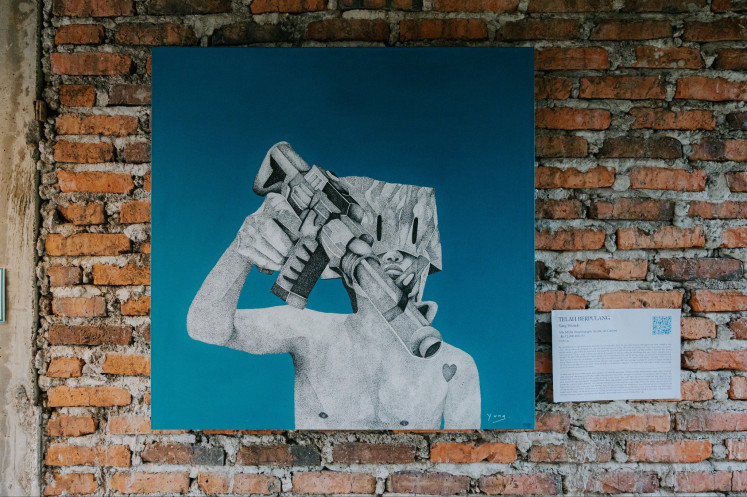
“Asmaraloka's aim this year is the Uniform Circulation Program, which makes uniforms free for all students across Indonesia. We do that by redistributing new and recycled uniforms to rural schools around Indonesia. We also have the Rural-Urban School Partnership Program, which aims to release children from the burden of paying for school supplies and materials by redistributing and delivering school supplies to more rural schools around Indonesia,” Sophie shared.


